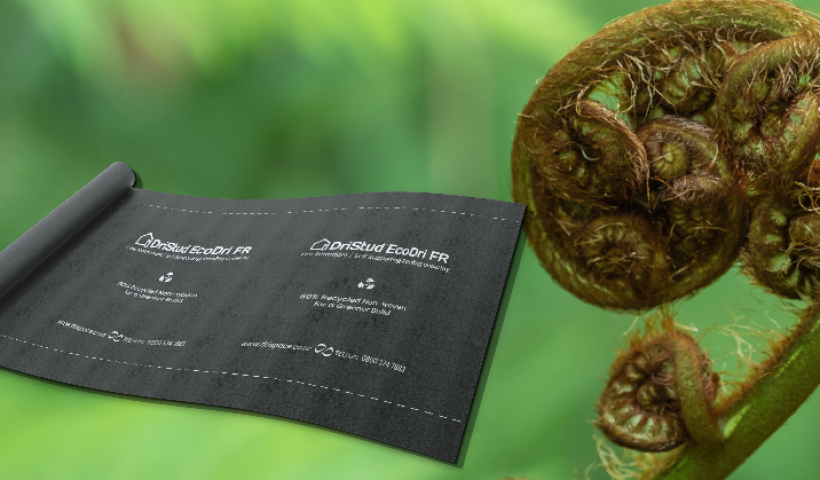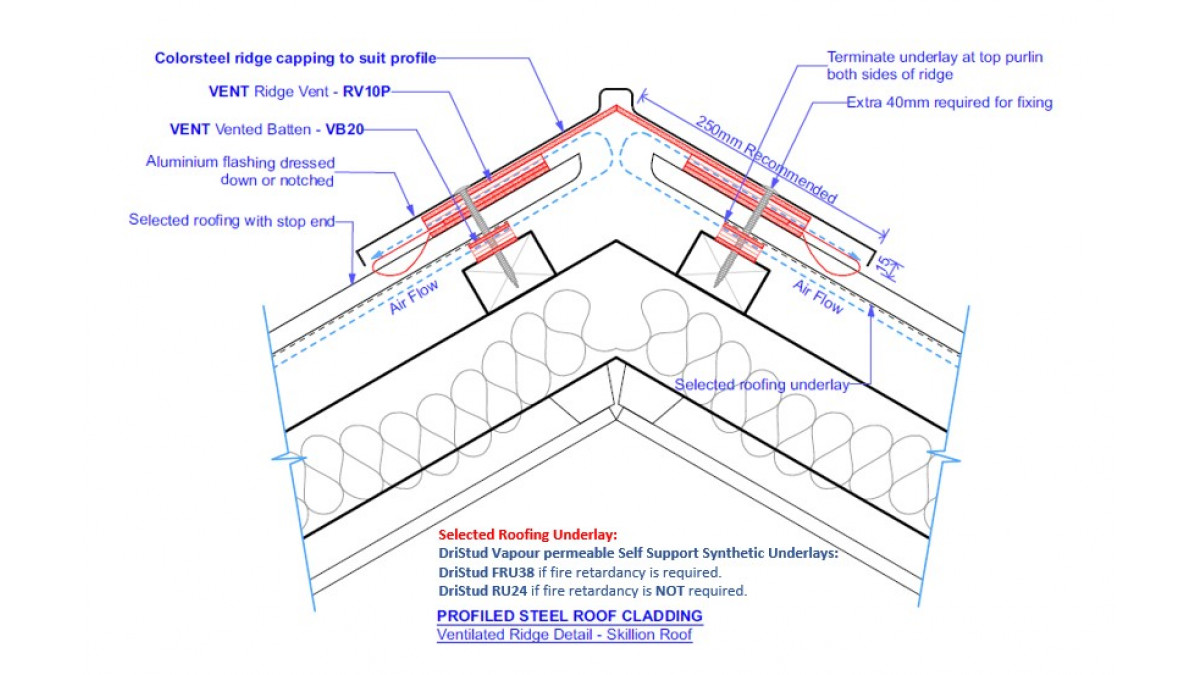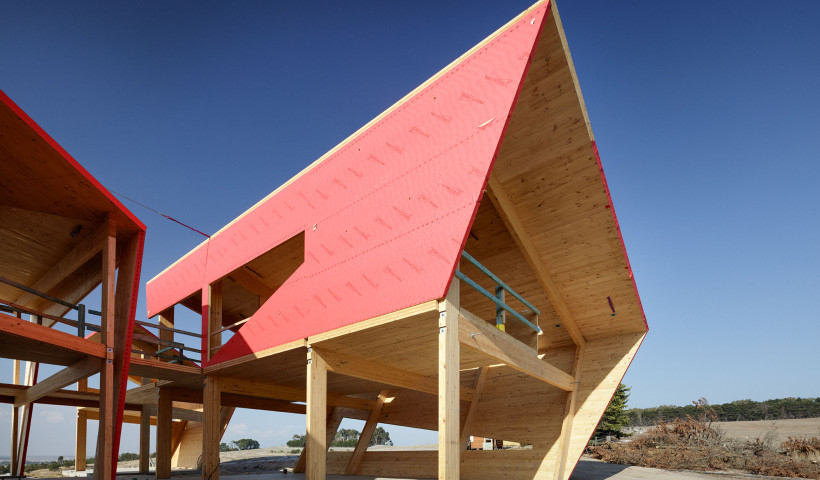 NEW
NEW
TCL Hunt Building Products offer a system solution to minimise condensation in the roof cavity and keep the building breathing. For skillion roofs with limited space in the roof cavity, DriStud recognises there is a much higher risk of moisture accumulation within the roof space. Applying Vent systems and high vapour-permeable underlays will improve durability and mitigate the risk of internal moisture build-up and associated issues caused by internal moisture. Based on international best practice, using the right passive ventilation system ensures the roof space and insulation remains dry, preventing the occurrence of dampness, mould and rot.
Roof underlays
DriStud Roof Underlays are designed to manage and minimise the risk of condensation with their high vapour permeability (average 0.2MNs/g of vapour resistance, ASTM E96 Procedure B) which allows moist air to pass through the underlay.
DriStud Roof Underlays have been tested to meet the following requirements:
| Property | Test Method | Requirement | Results |
|---|---|---|---|
| Water Vapour Resistance | ASTM E96 Procedure B | ≤ 7MN s/g | Pass |
| Absorbency | AS/NZS 4201: Part 6 | ≥ 150 g/m² | Pass: 225 g/m² |
| Air Resistance | BS ISO 5636-5:2003 | ≥ 0.1 MN s/m3 | 23.3 MN s/m3 |
| Water Resistance | AS/NZS 4201.4:1994 | ≥ 100mm H2O | Pass |
| Flammability | AS 1530.2:1993 | FR Index ≤ 5 | FR Index 3 |
| Resistance to UV Exposure | ASTM G154 | 20 days | |
| Mechanical | ASTM D882 | Tensile Strength | MD: 6.88 KN/m CD: 5.84 KN/m |
| Edge Tear Resistance | TAPPI T470 | Edge tear strength | MD: 351 N CD: 302 N |
Passive Ventilation:
Vent NZ has developed two passive ventilation systems specifically tailored to the different requirements of pitched skillion roofs and mono-pitched skillion roofs.
For a pitched skillion roof of any degree pitch, Vent recommends installing a three product combination. Firstly, the Vent Over Fascia Vent – G2500N is fitted to the top of the fascia to allow calculated airflow of 25,000mm² per linear metre into the roof cavity. Then VB20, ventilated battens are applied to each purlin, ensuring unimpeded airflow through the centre of the roof cavity. Then Ridge Vents are installed to create negative pressure to draw consistent and constant airflow through the roof and allow warm, moist air to escape the roof cavity.
Vapour check layer:
Where there is a higher risk of condensation, DriStud recommends installing ProctorPassive SmartVap 100 — a barrier and variable vapour diffusion resistance retarder.
ProctorPassive SmartVap 100 will form an airtight layer, improving the efficacy of ventilation systems and thermal efficiency of the building enclosure. The effective management of air and vapour passage through wall, ceiling and floor assemblies can help protect the building fabric and insulation from condensation and related problems such as mould, timber rot, corrosion and loss of thermal resistance.
Please visit the DriStud website or call on 021 935 555 if you would like a copy of the DriStud Roof Ventilation Design Guide.













 New Products
New Products


















 Popular Products from DriSpace
Popular Products from DriSpace


 Most Popular
Most Popular


 Popular Blog Posts
Popular Blog Posts
